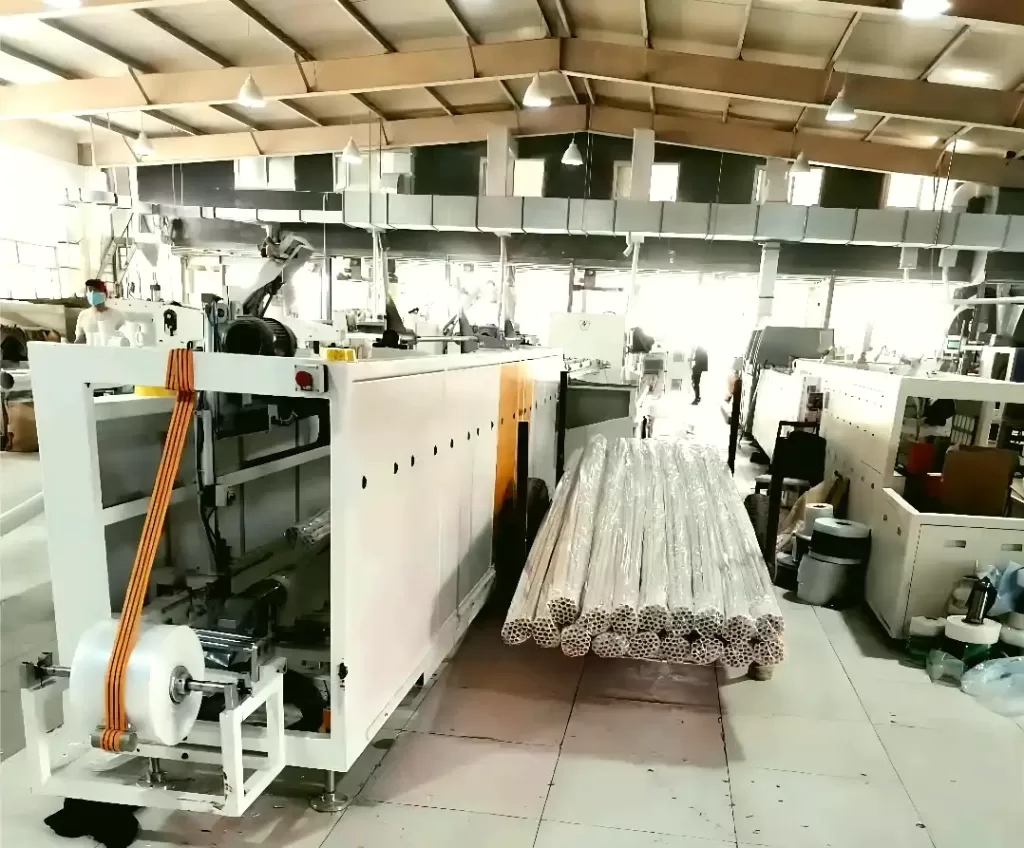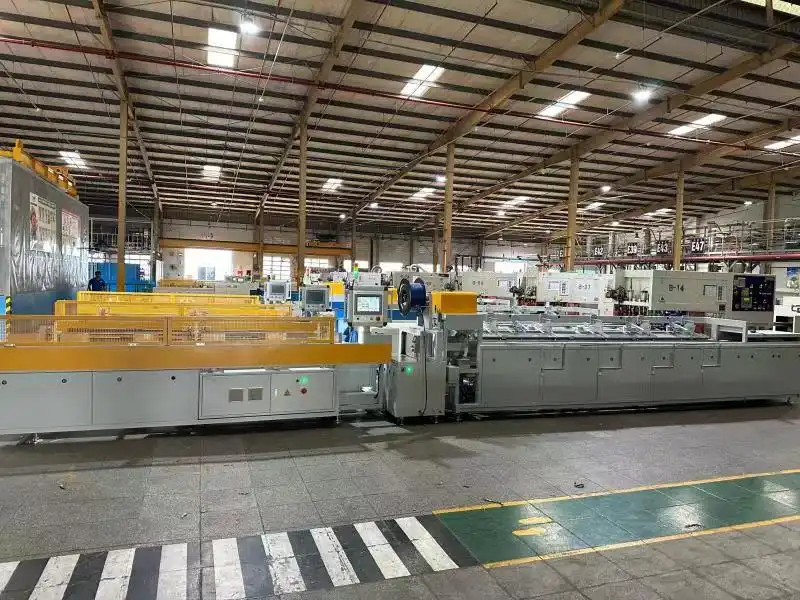Streamlining Operations: The Role of Automatic Pipe Bundle Packaging Systems with Bag Packing
In pipe manufacturing and distribution, efficient handling and packaging are critical for maintaining product integrity and operational efficiency. Manual packaging processes can be labor-intensive, slow, and prone to inconsistencies. Implementing an Automatic Pipe Bundle Packaging System with Bag Packing offers a robust solution to streamline these operations, enhance throughput, and improve the overall quality of packaged goods.
Understanding Automatic Pipe Bundle Packaging Systems
An automatic pipe bundle packaging system is an integrated solution designed to count, collect, bundle, and securely package pipes or tubes with minimal human intervention. These systems typically handle various pipe diameters and lengths, forming neat bundles that are then often strapped or banded. The addition of automatic bag packing further enhances protection and presentation.
Core Process Steps:
- Infeed & Counting: Pipes are fed into the system, often via conveyors, where sensors accurately count them to achieve the desired bundle size.
- Arrangement & Bundling: Pipes are arranged into a predetermined shape (e.g., hexagonal, square) and then grouped together.
- Strapping/Banding: The bundle is secured using steel or plastic straps applied automatically at set intervals.
- Bag Insertion/Wrapping: The strapped bundle moves to the bagging station, where a pre-made bag is automatically placed over the bundle, or a film is wrapped around it and sealed.
- Sealing & Discharge: The bag is securely closed (e.g., heat-sealed, tied), and the finished, packaged bundle is discharged onto an exit conveyor or accumulation table.

online pipe bundling ang bagging machine3 Key Benefits of Automated Pipe Packaging with Bagging
Integrating automation, particularly including bag packing, into your pipe handling process yields several significant advantages:
1. Significant Labor Cost Reduction and Reallocation
Automated systems dramatically reduce the need for manual labor in the packaging stage. This leads to direct savings on wages, benefits, and training. Staff previously involved in manual packing can be reallocated to higher-value tasks within the facility.
2. Enhanced Throughput and Operational Efficiency
Automation enables continuous, high-speed operation, significantly increasing the number of bundles packaged per shift compared to manual methods. This consistent output helps meet demanding production schedules and improves overall plant efficiency.
3. Improved Packaging Consistency and Quality
Automated systems ensure that every bundle is formed, strapped, and bagged uniformly according to pre-set parameters. This consistency enhances load stability, protects pipes more effectively during transit and storage, and presents a professional image. Bagging adds a crucial layer of protection against dirt, moisture, and surface scratches.

4. Increased Workplace Safety
Manual handling of heavy pipes and bundles poses ergonomic risks and potential for injury. Automating these tasks minimizes direct human interaction with heavy materials and moving machinery components, contributing to a safer working environment.
5. Optimized Material Usage
Automatic systems are calibrated to use the precise amount of strapping and bagging material required for each bundle, reducing waste compared to manual application.
Manual vs. Automatic Pipe Packaging: A Comparative Look
| Feature | Manual Packaging | Automatic Packaging System |
|---|---|---|
| Labor | High requirement, intensive, repetitive tasks | Minimal supervision required, reduces direct labor |
| Speed | Slower, limited by human capacity | Significantly faster, continuous operation possible |
| Consistency | Variable, dependent on operator skill/fatigue | Highly consistent bundle formation and packaging |
| Safety | Higher risk of ergonomic injuries | Reduced manual handling, improved safety |
| Material Use | Potential for waste | Optimized, controlled material consumption |
| Operating Cost | High recurring labor costs | Higher initial investment, lower operating costs |
While manual packaging might suffice for very low-volume operations, the labor costs, potential inconsistencies, and safety concerns become significant drawbacks as production scales. An automatic system, despite its initial investment, offers substantial long-term savings and operational benefits. More information on available systems can be found through providers like www.fhopepack.com.
Considerations for Implementation
When considering an automatic pipe bundle packaging system, factors to evaluate include:
- Pipe Specifications: Diameter range, length variation, weight, and material.
- Bundle Requirements: Desired bundle size, shape, and weight.
- Throughput Needs: Required bundles per hour or shift.
- Bagging Needs: Type of protection required (dust, moisture, scratch), material preferences (PE film, woven bags), and closure method.
- Factory Layout: Available space and integration with existing production lines.
- Maintenance & Support: Availability of technical support and spare parts.

automatic pipe bagging machine for pvc and ppr (1) Conclusion
Investing in an automatic pipe bundle packaging system with integrated bag packing represents a strategic move for pipe manufacturers aiming to enhance efficiency, reduce operational costs, and improve product protection. By automating the labor-intensive packaging process, businesses can achieve greater consistency, higher throughput, and a safer work environment, ultimately strengthening their competitive position in the market. Evaluating specific operational needs against the capabilities of modern automated systems is the first step toward streamlining this critical end-of-line process.
